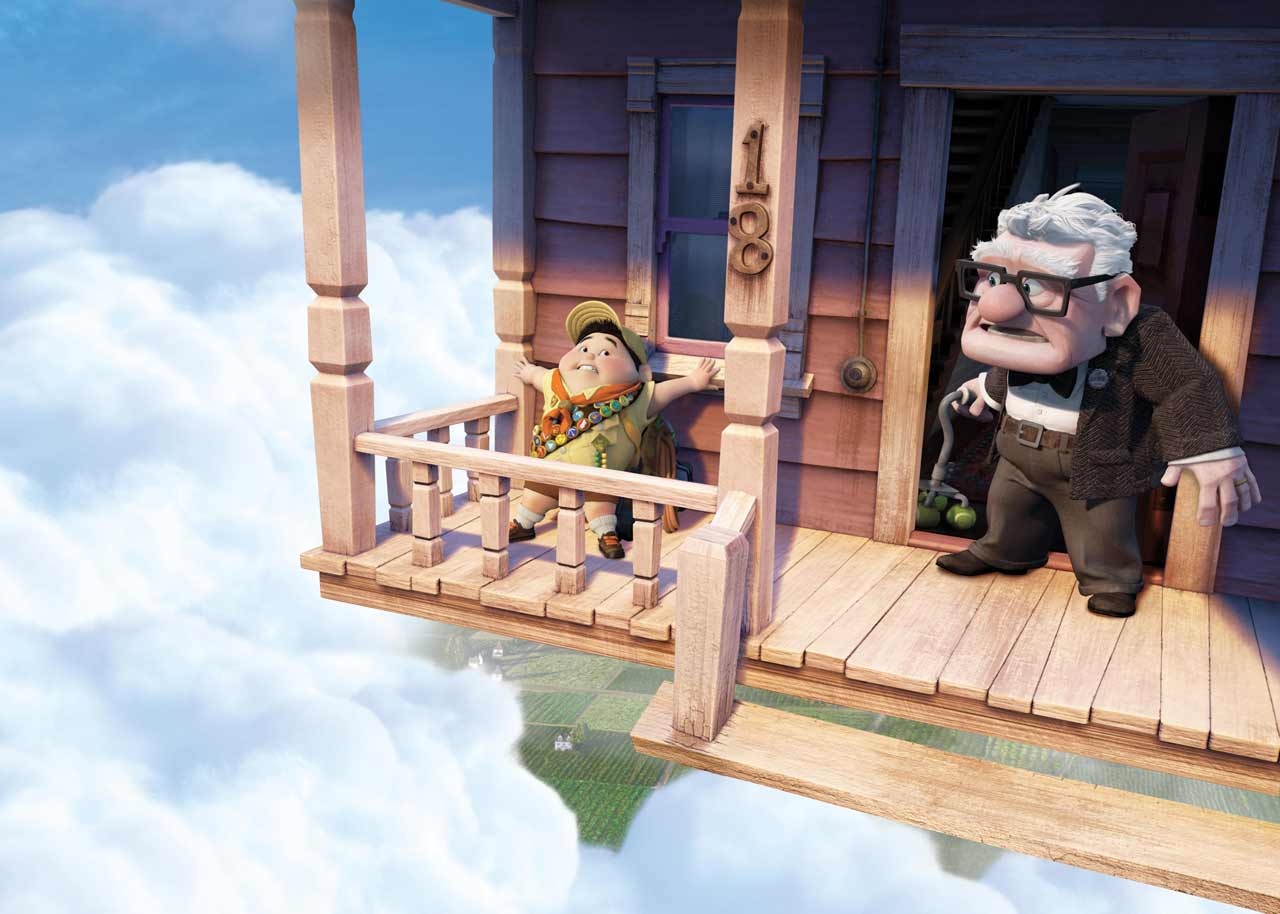Coraline

This Henry Selick stop-motion fantasy is the story of young Coraline, a girl just moved into a multi-family house with her busy parents. Coraline is peeved that her parents don't have extra time to spend on her, or on the formidable task of homemaking, and she's more than a little lonely. When she explores the house, she finds a portal into an "other" reality where her other mother seems eager to dote on her night and day, fixing up calorie-rich breakfasts and keeping her dorky other father at bay. But the other world isn't as lovely as it seems — Coraline's other mother is scheming to trap her in the other world, where she will sew up Coraline's eye sockets, replacing them with buttons, and hold her captive.
The source material, a novel by Neil Gaiman, is clever, spinning an eerie yarn about learning to live with the family you have rather than a perceived ideal — it's much more deft than any number of banal stories about the dysfunction hidden behind bland, outwardly perfect suburbanite facades. But, at least as it's presented here, it lacks focus. There is a cast of wacky characters with their requisite antics — the acrobat upstairs, the dotty old actresses in the basement — and each of them has a magnified, distorted funhouse reflection in the other world. And there's a scraggly old cat who crosses freely between dimensions, offering Coraline advice on tripping up the other mother. Selick executes all of this with the slightly twee flair he's known for, and the judicious CG enhancements to his animated puppetry add a further seamlessness to the craftsmanship.
(Side note: turns out I'm not a particular fan of 3D for this sort of film. I kept feeling like the depth effects were keeping me from appreciating the fine detail of the figures and sets. A movie like this has as its subject a kind of surreality, and oddly enough the 3D seems to dial the imagery back down toward the mundane.)
Selick sure knows how to set and maintain a mood. He doesn't pander to the audience by gratuitiously accenting the heeby-jeebies, opting to let the creepiness just sort of hang in the air, growing thicker as the movie progresses, rather than concentrating it in a few booga-booga scenes. But there could be more meat on these bones. For instance, Coraline herself doesn't actually do all that much. For much of the film, she has little more impact on her environment than Alice does on Wonderland. Mostly, she's content to sit and watch, a surrogate for the movie-theater audience that, donning 3D glasses, stares back at her.
Coraline's ultimate solution to the problem involves an appeal to her other mother's sense of gamesmanship, which is maybe too literary a device for this very visually driven movie but OK. However, when her problems ultimately dog her back in the real world, it's up to her boy buddy Wybie (who serves little other purpose in the narrative) to save her at the last moment. I asked my wife and her buddy, big Gaiman fans, about this on the way home, and they told me Wybie wasn't even in Gaiman's book — that his character was invented just for the movie. This strikes me as a huge mistake. In a multiplex environment that prizes women as sex kittens, shopaholics, or just baffled single girls desperate for the love of a man — not that those characters don't have their place — we get too few strong, self-reliant female protagonists for young audiences to look up to. Is it too much to ask that Coraline, at least, be allowed to fend for herself?
Posted by on February 11, 2024 11:05 PM